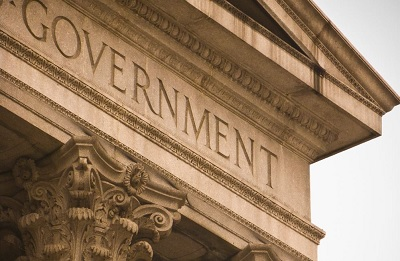Unit 1: Structure and Function of Government
Unit 1: Structure and Function of Government

Unit 1: Structure and Function of Government

Unit 1: Structure and Function of Government
The structure of government
The study of governmental structures must be approached with great caution, for political systems having the same kind of legal arrangements and using the same type of governmental machinery often function very differently. A parliament, for example, may be an important and effective part of a political system; or it may be no more than an institutional facade of little practical significance. A constitution may provide the framework within which the political life of a state is conducted; or it may be no more than a piece of paper, its provisions bearing almost no relationship to the facts of political life. Political systems must never be classified in terms of their legal structures alone: the fact that two states have similar constitutions with similar institutional provisions and legal requirements should never, by itself, lead to the conclusion that they represent the same type of political system.
To be useful, the study of governmental structures must always proceed hand in hand with an investigation of the actual facts of the political process: the analyst must exercise the greatest care in distinguishing between form and reality and between prescription and practice. Approached in this way, an examination of the organizational arrangements that governments use for making decisions and exercising power can be a valuable tool of political inquiry.
Contemporary forms of government
Few states in the modern world have constitutional arrangements that are more than a century old. Indeed, the vast majority of all the world’s states have constitutions written in the 20th or 21st century. This is true of states that were defeated in World War II, such as Germany, Italy, and Japan, and of other states that experienced civil war and revolutions in the course of the last century, such as the successor states of the Soviet Union, Spain, and China. The United Kingdom and the United States are almost alone among major contemporary nation-states in possessing constitutional arrangements that predate the 20th century.
Even in Britain and the United States, the 20th century saw much change in the governmental system. In the United States, for example, the relationship of legislature and executive at both the national and the state levels was significantly altered by the growth of bureaucracies and the enlargement of the executive’s budgetary powers. In Britain, even more far-reaching changes occurred in the relationship between the prime minister and Parliament and in Parliament’s role in supervising the executive establishment. In both countries the appearance of the welfare state, the impact of modern technology on the economy, and international crises resulted in major alterations in the ways in which the institutions of government function and interact.
The modern student of constitutional forms and institutional arrangements confronts an endlessly changing world. In many parts of the world, in countries as different as France, Pakistan, Argentina, and Tanzania, there have been continuing experiments with new constitutions. The adoption of new constitutions also has been a major aspect of political change in the successor states of the Soviet Union and Yugoslavia. All systems, moreover, even without formal constitutional change, undergo a continual process of adjustment and mutation as their institutional arrangements respond to and reflect changes in the social order and the balance of political forces.
This unit emphasizes the structure and function of government at three levels—local, state, and national.
Unit Focus
- Definition of government
- Purposes of government
- Levels of government
- Functions of each level of government
- Major events and documents leading to the establishment of the United States government
Vocabulary
Lesson Reading
Videos and Interactives (Click on Images to View Content)

